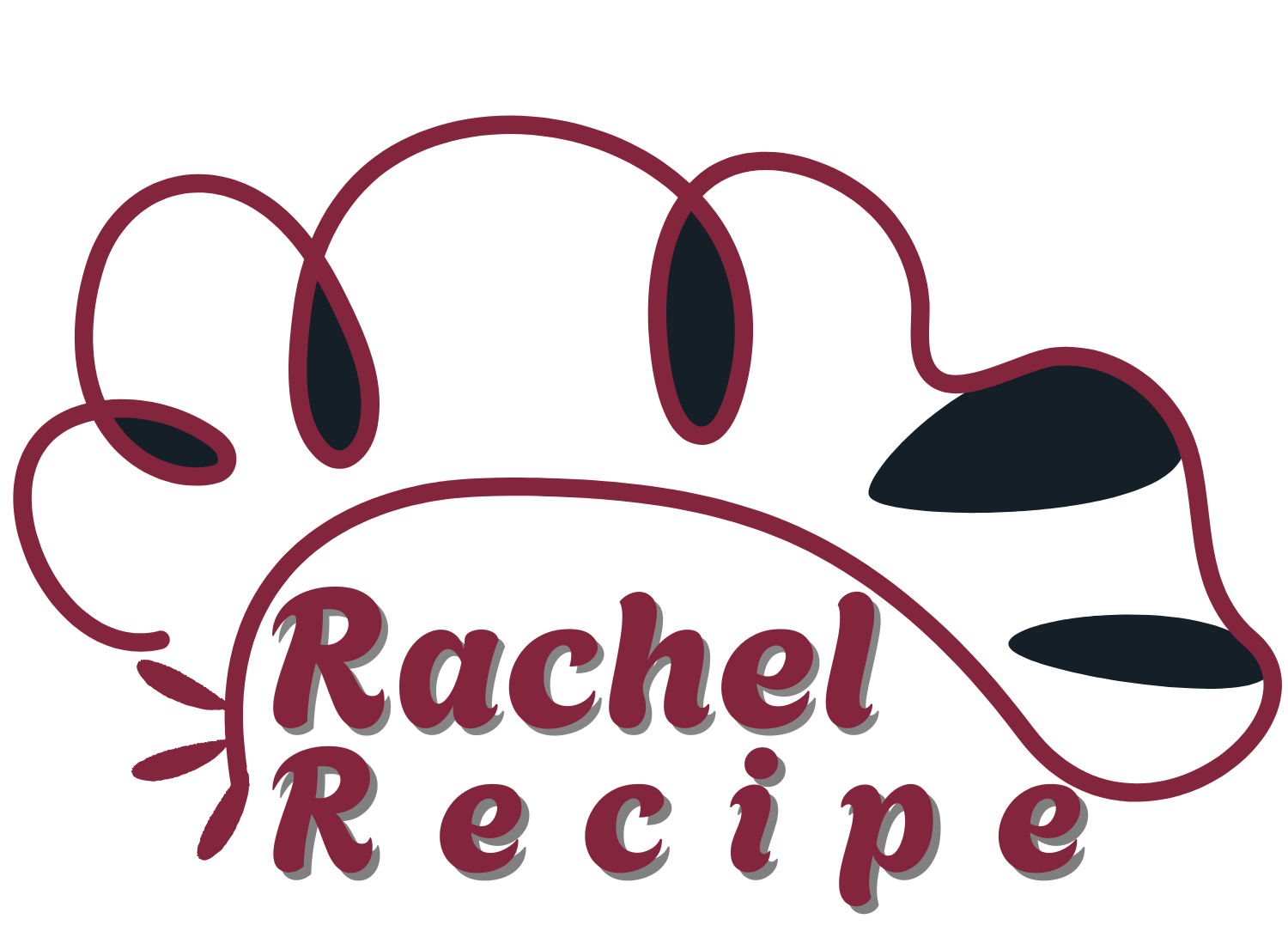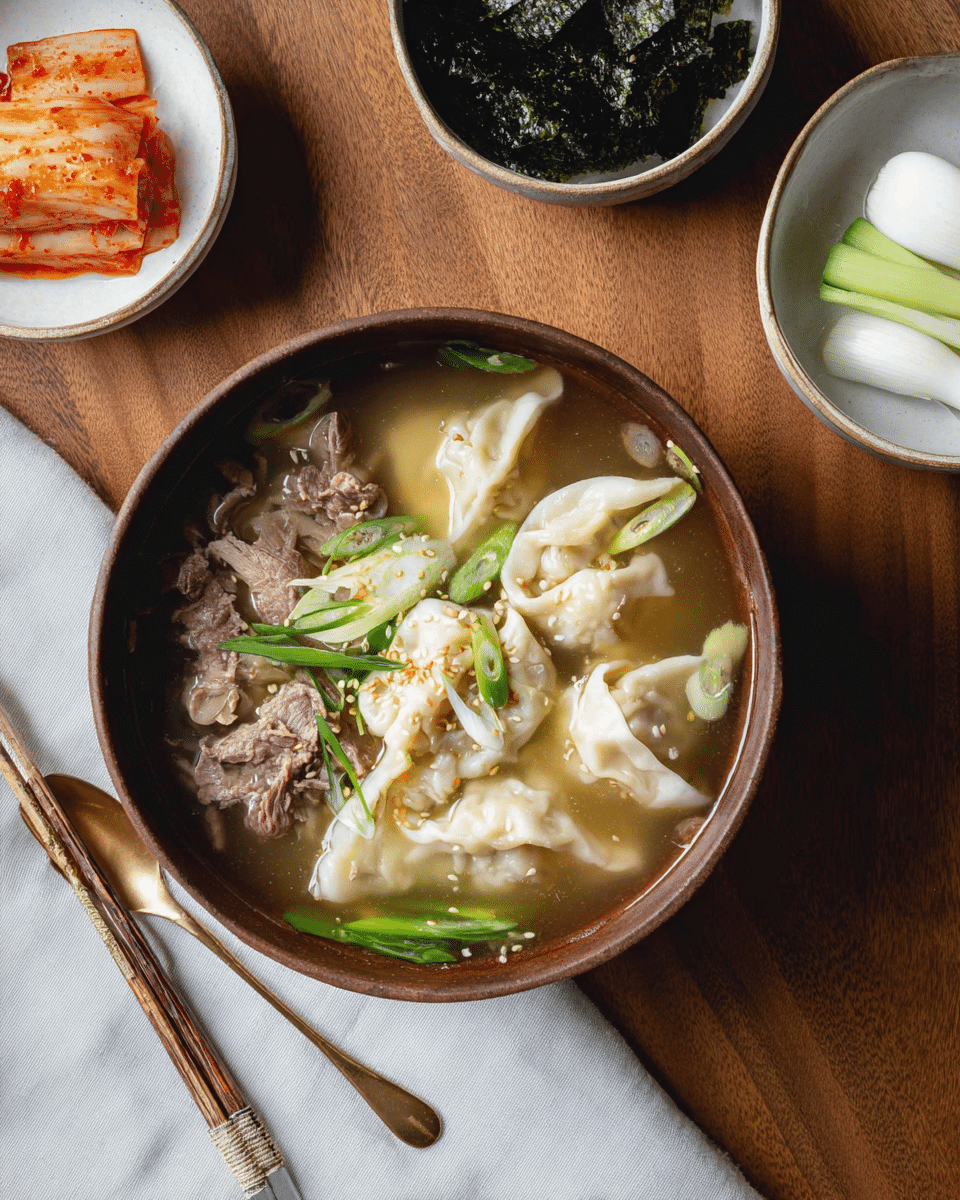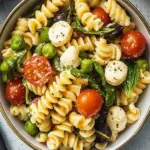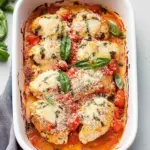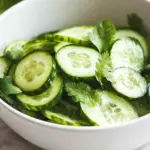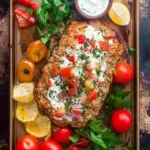The gentle aroma of garlic, soy, and sesame rising from a bowl of Mandu Guk is an experience of pure Korean comfort. Soft dumplings filled with savory meat or vegetables float in a hearty beef broth alongside shimmering egg ribbons, green onions, and wisps of nori. Every spoonful tells the story of tradition, warmth, and nourishment.
Often eaten during the Korean Lunar New Year, Mandu Guk symbolizes growth and a new beginning. But you don’t need a holiday to enjoy this heartwarming bowl. Quick to prepare with store-bought dumplings and customizable to your preferences, this soup is perfect for when you need something easy, wholesome, and full of flavor.
Full Recipe:
-
1 pound beef brisket or chuck, cut into 1- to 1½-inch pieces
-
4 cloves garlic, minced
-
4 tablespoons soy sauce
-
10 cups water
-
32 fresh or frozen mandu (Korean dumplings)
-
2 large eggs
-
4 green onions, cut diagonally into 2-inch slices
-
2 tablespoons toasted sesame oil
-
2 teaspoons salt (plus more to taste)
-
1 teaspoon white or black pepper (plus more to taste)
-
2 roasted nori sheets, for garnish
Directions:
-
In a bowl, combine the beef, garlic, and soy sauce. Let sit for 10 minutes while you prepare the pot.
-
In a large stockpot, bring the water to a boil. Add the beef mixture. Reduce to a simmer, cover, and cook for 30–35 minutes to build a rich broth.
-
Add the mandu to the pot and bring the heat up to a gentle boil. Cook fresh mandu for 5–9 minutes or frozen mandu for 12 minutes, or follow package instructions. The dumplings will float when done.
-
Lightly whisk the eggs. Stir the soup in a circular motion and slowly drizzle in the eggs to create soft ribbons.
-
Turn off the heat and stir in green onions and sesame oil. Season with salt and pepper to taste.
-
Ladle the soup into bowls. Crumble or cut the roasted nori and sprinkle over the top just before serving.
Prep Time: 10 minutes | Cooking Time: 45 minutes | Total Time: 55 minutes
Kcal: 717 kcal | Servings: 4–6 servings
Introduction to Mandu Guk
Mandu Guk, or Korean Dumpling Soup, is one of Korea’s most beloved comfort foods. At its core, it is a soul-warming soup featuring dumplings (mandu) simmered in a flavorful broth, typically made from beef, and often finished with an egg ribbon and garnished with green onions and roasted seaweed (nori). This dish holds both culinary and cultural significance and is enjoyed across Korea and by Korean communities worldwide.
Though traditionally served during Korean Lunar New Year (Seollal), Mandu Guk is enjoyed year-round due to its rich flavors, filling ingredients, and nourishing qualities. This bowl of warmth and nostalgia brings together elements of family, heritage, and healing through food.
The Cultural Significance of Mandu Guk
Mandu Guk isn’t just a dish—it’s a tradition. In Korea, eating this soup during Seollal marks the official start of a new year. In fact, there’s a common saying: “You’re not a year older until you’ve had a bowl of tteokguk (rice cake soup),” and Mandu Guk is often served with or instead of tteokguk during the celebration.
The dumplings in Mandu Guk represent good fortune and prosperity, as their half-moon shape is said to resemble old Korean currency pouches, symbolizing wealth. Sharing a pot of Mandu Guk with family during New Year’s Day is a way to reflect, reconnect, and hope for prosperity in the coming year.
However, beyond holidays, this dish has made its way into everyday meals thanks to its simplicity, versatility, and deeply comforting nature.
Regional and Personal Variations
There is no singular way to prepare Mandu Guk, and that’s what makes it a versatile and personal dish. Different regions and households in Korea have their own takes on the soup. While the beef-based broth is perhaps the most common, other versions use anchovy broth or even chicken stock for a lighter alternative.
The dumplings themselves can vary widely in filling—ranging from classic pork and garlic chive mixtures to kimchi-based mandu or vegetarian options made with tofu and vegetables. In Northern Korea, mandu tends to be larger and more delicately flavored, while Southern styles might lean into bolder seasonings and spicier accompaniments.
Some versions of the soup also incorporate chewy slices of tteok (rice cakes) to add another layer of texture and symbolism—especially during festive times.
Why Mandu Guk Is the Ultimate Comfort Food
There’s something inherently soothing about a steaming bowl of Mandu Guk. The warmth of the broth, the pillowy texture of dumplings, and the richness of the egg and sesame oil work together to create a dish that feels like a hug in a bowl.
The soup is hearty enough to serve as a complete meal. With protein from the beef and dumplings, carbs from rice cakes (if included), and nutrients from the broth and added vegetables, it offers balanced nourishment in every bite.
Beyond nutrition, it delivers emotional comfort. Whether it’s raining, snowing, or you just need a pick-me-up after a long day, this soup brings a sense of peace and grounding. That’s why it remains a staple in Korean households, particularly during winter months.
The Convenience of Store-Bought Mandu
One of the most appealing aspects of Mandu Guk for modern home cooks is how adaptable it is to busy schedules. While making dumplings from scratch is a rewarding and communal activity, you can also prepare this dish using store-bought mandu.
Korean grocery stores and Asian supermarkets stock a wide variety of frozen mandu, including options filled with pork, chicken, shrimp, kimchi, and even vegetarian or vegan fillings. These dumplings hold up well in broth and cook quickly, making this soup a perfect weeknight dinner solution.
Using pre-packaged mandu cuts down on preparation time without compromising on authenticity or flavor. In fact, this shortcut has helped the dish grow in popularity around the world.
Making Mandu Guk Vegetarian-Friendly
Though the classic version of Mandu Guk is meat-based, it can easily be transformed into a vegetarian or even vegan dish. The key substitution lies in the broth and the dumpling filling. Vegetable broth can serve as the base, while plant-based mandu can be filled with tofu, mushrooms, cabbage, or glass noodles.
Adding elements like shiitake mushrooms, bok choy, and even carrots can elevate the flavor profile, giving it umami depth and nutritional variety. Vegan sesame oil and soy sauce can be used to season the soup, ensuring you still get that characteristic nuttiness and warmth.
This flexibility means that Mandu Guk is inclusive and adaptable for many dietary needs.
Toppings and Garnishes: Small Details, Big Flavor
While the main ingredients of Mandu Guk are relatively simple, the toppings can turn a good bowl into a great one. Common garnishes include:
-
Nori (roasted seaweed): Adds a briny depth and light crispness when sprinkled on top.
-
Sliced green onions: Provide freshness and a mild bite to balance the richness of the broth.
-
Sesame oil: Drizzled just before serving for a fragrant and nutty aroma.
-
Egg ribbons: Whisked eggs poured into the hot broth create delicate strands that enhance texture and visual appeal.
Optional toppings can also include sliced chili, kimchi on the side, or even a dash of gochugaru (Korean red chili flakes) for heat. These customizable components let you tailor each bowl to your liking.
Pairing Mandu Guk with Other Dishes
Mandu Guk is typically served on its own as a complete meal, but it can also be paired with simple Korean side dishes (banchan). A small serving of kimchi adds the perfect tangy contrast to the mild, savory soup. Other sides like pickled radish, seasoned spinach, or pan-fried tofu make excellent companions.
If you’re serving a Korean-themed dinner, Mandu Guk can function as a starter to a larger meal, followed by dishes like bibimbap, bulgogi, or japchae. But honestly, most people find a generous bowl of this dumpling soup to be more than enough.
Tips for the Best Mandu Guk Experience
-
Use a rich broth: Whether homemade or store-bought, the broth sets the tone for the dish. Don’t skimp on flavor enhancers like garlic, soy sauce, and sesame oil.
-
Cook dumplings gently: Overboiling can cause them to burst. Cook just until they float and look translucent.
-
Stir while adding eggs: To get that beautiful egg ribbon effect, stir the soup in a circle while drizzling in the whisked eggs slowly.
-
Serve immediately: The texture and flavor are at their peak when served hot and fresh. Leftovers are fine, but the dumplings will continue to soften in the broth.
Conclusion: A Dish That Feeds Both Body and Soul
Mandu Guk is more than just a soup—it’s a story in a bowl. It represents celebration, comfort, resilience, and tradition. Whether you’re honoring a Korean holiday or simply need something satisfying on a chilly evening, this dish delivers warmth, nourishment, and connection.
Its adaptability makes it ideal for all types of cooks—from beginners relying on store-bought dumplings to seasoned chefs crafting everything from scratch. Its balance of flavors, ease of preparation, and emotional resonance make Mandu Guk a true staple in Korean cuisine and a beautiful addition to any global kitchen.
